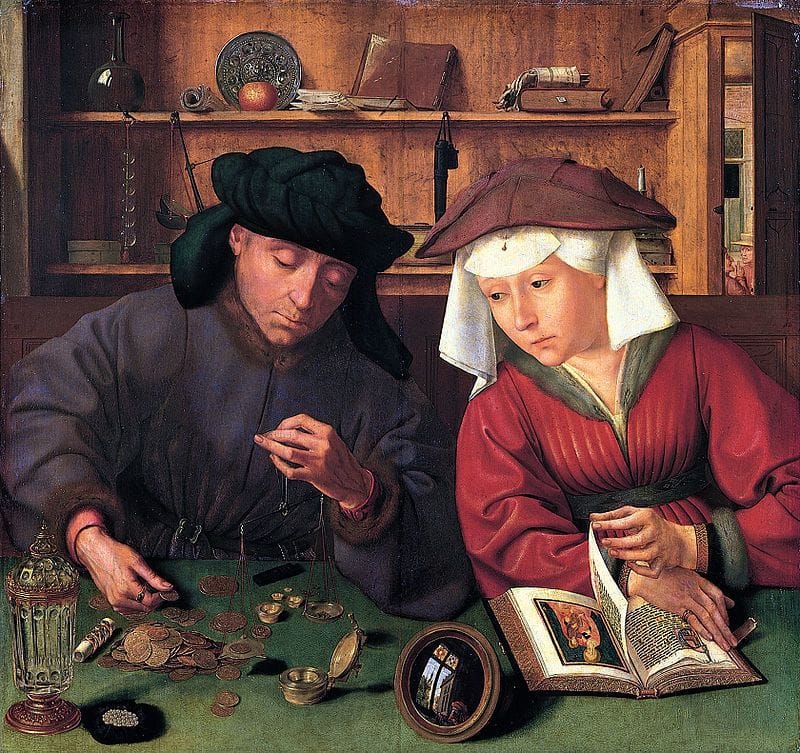

The Money Changer and His Wife, 1514
Quentin Matsys
Rather than a descriptive work documenting the subject's profession or contemporary religious practice, this painting is an allegorical and moral work, condemning avarice and exalting honesty, as is shown by emblems of the vanity of life and Christian symbols like the scales of the Last Judgment. Its nature is underlined by the curiously archaic dress of the subjects, which seems to hark back to an earlier period. The mirror is a fascinating detail, reminiscent of the virtuosity of van Eyck.
The two subjects are depicted half-length, seated behind a table. The scene is tightly framed, making them the focus of attention. They are in perfect symmetry. The man is busy weighing the pearls, jewels, and pieces of gold on the table in front of him. This is distracting his wife from the book she is reading--a work of devotion, as the illustration of the Virgin and Child shows. The mirror placed in the foreground-a common device in Flemish painting, allowing the artist to create a link with the space beyond the framed scene-reflects a figure standing in front of a window. On the right, a door stands ajar, revealing a youth talking to an old man. The artist has produced an archaic rendering of the volumes and colors, opposing red and green, for instance. This fact, as well as the minute level of detail of the objects depicted, has led some art historians to speculate that this might be an imitation of a lost work by Jan van Eyck.
A painting with a moral
The second half of the fifteenth century in northern Europe saw an expansion of genre painting-landscapes, portraits, and scenes of daily life, which artists depicted with moralizing overtones as a way of condemning human vices and reminding viewers of the frailty of human existence. These are precisely the aspects that Metsys--often considered one of the founders of the genre-highlights in this work. The shiny gold, pearls (a symbol of lust), and jewelry have distracted the wife from her spiritual duty, reading a work of devotion. The objects in the background have been carefully chosen to strengthen the work's moral message. The snuffed-out candle and the fruit on the shelf-an allusion to original sin and a reminder that we are all doomed to return to dust-are symbols of death. The carafe of water and the rosary hanging from the shelf symbolize the purity of the Virgin. Finally, the small wooden box represents a place where faith has retired. Other artists, most notably Marinus van Reymerswaele, painted many works on a similar theme.
(http://www.louvre.fr/en/oeuvre-notices/moneylender-and-his-wife)
71 x 68 in
Uploaded on Aug 9, 2016 by Suzan Hamer
Quentin Matsys
artistArthur
Wait what?